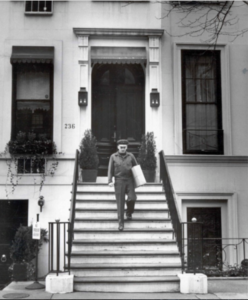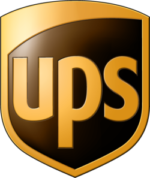Any company that’s still doing innovative things after more than a century deserves some serious respect. We’re looking at you, UPS, with your route optimization algorithms and your drone testing. A journey through the history of UPS makes it clear that pushing the limits is engrained in everything this company does. UPS employees are part of a long legacy of technological advances and delivery firsts. So what does it take to be a leader in shipping? Read on.
1907
It all started when the founder of UPS, Jim Casey, asked a friend for $100. He used it to start something called the “American Messenger Company”. Back then, $100 went a whole lot farther than it does today.
1913
A Model T Ford became the very first UPS delivery car. Oh, and the company changed its name to “Merchants Parcel Delivery”.

1919
Another name change. We’re sensing a trend here. Except this one, “United Parcel Service (UPS),” stuck.

1924
It’s hard to imagine warehouses working smoothly without conveyor belts. UPS built the first one for package handling this year.

1929
Air deliveries took off, making UPS the first company to transport packages this way.

1950s
Before the 1950s, UPS wasn’t allowed to deliver packages in between both private customers and commercial ones (like department stores). Then, they acquired something called “common carrier rights”. Those rights made UPS the US Postal Service’s biggest competitor.

1975
UPS became the first to deliver packages to any address in the United States—except Alaska and Hawaii. Those happened later. It seems simple, but state border restrictions made this an impossible feat until this year.

1985
Nobody likes to wait. UPS gets an upgrade with overnight air delivery.

1988
The Federal Aviation Administration declared UPS an official airline. It grew faster than any other airline and it’s now among the 10 biggest airlines in the country.

1993
You know those handheld devices you have to sign when you get a package? UPS developed them this
year to stay on top of its 11.5 million deliveries. It seems like a small thing, but it took UPS to an enviable level of organization.

1995
Ever obsessively check the tracking details on a package you were extra-eager to get? The UPS website launched in 1994 and a year later, online tracking became available. By 2000, the company was receiving 6.5 million tracking requests through its site.

2010-2014
UPS acquired over 40 companies, taking it far beyond straightforward transportation services. Those companies are leading the charge in things like trucking, air freight, finance and international trade services.

Today
UPS has a presence in over 185 countries and territories and reaches more than four billion people.
Ready to contribute to this longstanding legacy and help UPS continue making history? They’re hiring now, so head over to WayUp and apply!





